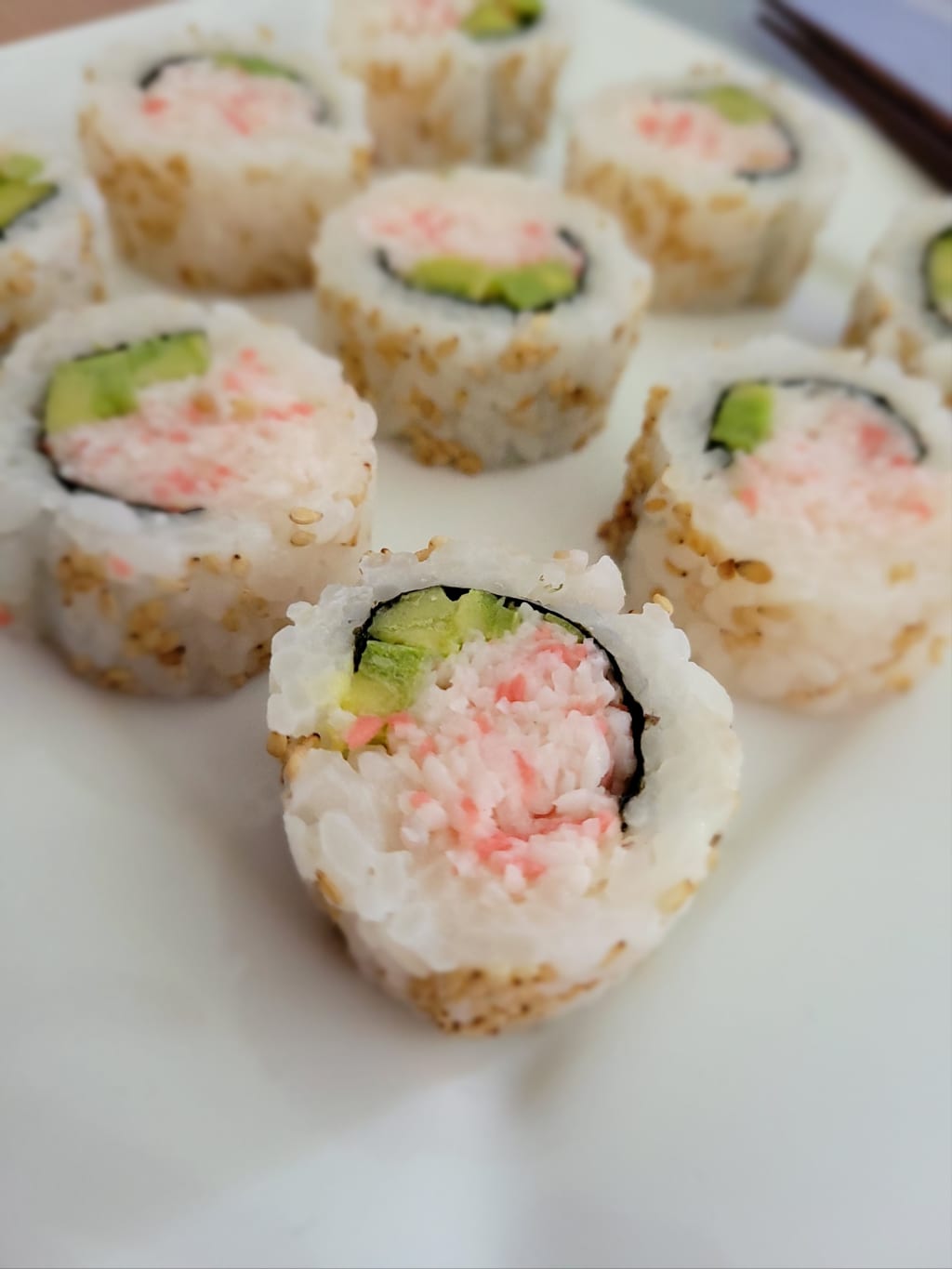Exploring the Culinary Delight: A Journey Through the World of Sushi
Sushi

Title: Exploring the Culinary Delight: A Journey Through the World of Sushi
Introduction:
Food is not just a means of sustenance; it is an art form that transcends cultural boundaries and brings people together. Within this vast culinary landscape, sushi stands out as a shining star, captivating taste buds and capturing hearts. This essay will delve into the enchanting world of sushi, exploring its origins, various types, and the intricate craftsmanship that goes into its creation.
Origins and Cultural Significance:
Sushi, originating in Japan, has a rich history that dates back centuries. Initially, sushi was a preservation technique in which fish was fermented with rice and salt. Over time, this evolved into the creation of a unique dish that would soon become synonymous with Japanese cuisine. Sushi's cultural significance lies not only in its taste but also in the rituals and traditions associated with its consumption. It is often regarded as an art form, requiring skill, precision, and reverence.
Types of Sushi:
Nigiri:
Nigiri sushi is the most recognizable form of sushi, consisting of a small mound of vinegared rice topped with a slice of raw or cooked fish. The simplicity of this type of sushi allows the freshness and quality of the fish to shine. Common fish varieties used for nigiri include tuna, salmon, shrimp, and yellowtail.
Maki:
Maki sushi, also known as sushi rolls, are made by wrapping fish, vegetables, or other ingredients in a sheet of nori (seaweed) and then rolling it with seasoned rice. Maki sushi offers endless possibilities for creativity, with popular options such as the California roll, spicy tuna roll, and tempura roll.
Sashimi:
While technically not sushi since it does not include rice, sashimi is an integral part of Japanese cuisine and is often served alongside sushi. Sashimi consists of thin slices of raw fish, typically enjoyed with soy sauce and wasabi. The emphasis is on the natural flavors and textures of the fish, showcasing the quality and freshness.
Temaki:
Temaki sushi, also known as hand rolls, is a cone-shaped sushi roll wrapped in nori. It is often filled with a combination of fish, vegetables, rice, and other ingredients. Temaki is a popular choice for those seeking a more interactive and customizable sushi experience.
Craftsmanship and Artistry:
Creating sushi is an intricate craft that requires years of training and dedication. Skilled sushi chefs, known as itamae, carefully select the finest ingredients, master the art of rice preparation, and utilize precise knife techniques to ensure the perfect balance of flavors and textures. The presentation of sushi is also a crucial aspect, with attention to detail and aesthetic beauty. From the elegant placement of garnishes to the delicate arrangement of sushi pieces, every aspect is carefully considered.
Conclusion:
Sushi represents a harmonious blend of taste, tradition, and craftsmanship. It has captured the hearts and taste buds of people worldwide, transcending cultural boundaries and becoming a symbol of Japan's culinary excellence. Whether it's the delicate balance of flavors in nigiri, the vibrant combinations in maki rolls, or the purity of sashimi, sushi offers a diverse range of options to cater to every palate. So, next time you indulge in the artistry of sushi, savor each bite and appreciate the centuries of tradition and skill that have gone into its creation.
About the Creator
VENKAT PRABHU
Venkatprabhu as your article writer, you can expect engaging, well-researched, and impeccably written content that leaves a lasting impression on your readers.
Enjoyed the story? Support the Creator.
Subscribe for free to receive all their stories in your feed. You could also pledge your support or give them a one-off tip, letting them know you appreciate their work.






Comments
There are no comments for this story
Be the first to respond and start the conversation.